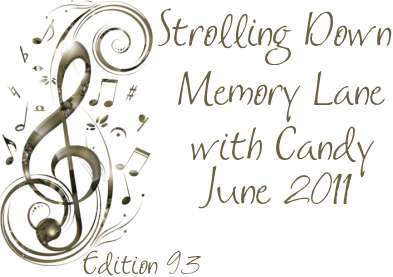
Let's go meet....
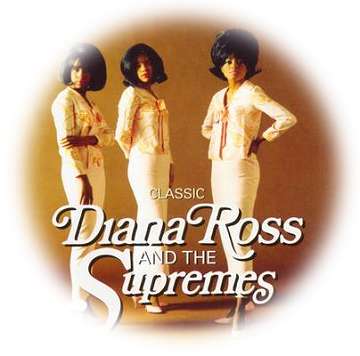
It was more than a record-setting chart sweep that began when "Where Did Our Love Go" made DIANA ROSS AND THE SUPREMES into household names in the summer of 1964. It was really a love affair -- between three women and the world. Along with the charmed circle of Motown singers, writers, producers and players, they re-wrote the book on pop music in the Sixties and Seventies. "Where Did Our Love Go," written by Brian Holland, Lamont Dozier and Eddie Holland, established a sound and a group in one giant step, with Diana Ross's bright, insinuating lead, and hypnotic repeating counterpoint from Mary Wilson and Florence Ballard.

The Supremes left Detroit in early summer on a Dick Clark tour bus at the bottom of the bill, but with excitement mounting, they returned with their first No. 1 record of five in a row.
Within a year, Diana Ross and the Supremes notched up six No. 1 pop singles, and they would post another six pop chart-toppers by the end of the decade. But the fact of that accomplishment is only one facet of the group's significance. The sound was so refreshing, the look so flawless, and the vibe so compelling that Diana Ross and the Supremes became no less than a defining reference point for America, for admiring musicians and fans worldwide, and for successive generations of female pop artists.

The Motown Sound was a powerful hybrid. Holland-Dozier-Holland and the legendary Motown rhythm players used blues, jazz, R&B, classical and pop devices to craft a run of Supremes hits that was danceable, melodic and diverse; funky and classy, all at once. When British pop-rock invaded the world and obsoleted most American teen acts, Motown's mix of ghetto soul and pop polish rocketed Detroit's talented artists onto center stage. The Supremes' "Baby Love" was the only record by an American group to top the British charts in 1964.
Motown's ingenious new fusion was the new sound that no one could duplicate -- and everybody in pop and R&B tried.
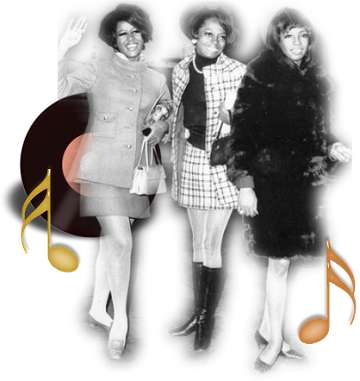
Every variation on the Supremes theme was recognizably theirs, yet fresh and individual. If "Baby Love," the second Supremes No. 1, was crafted in a classic follow-up strategy, the sophisticated yet swinging "I Hear a Symphony" took the formula to the sparkling musical and emotional conclusion. In the other three No. 1's of that magic first year, "Come See About Me," "Stop! in the Name of Love," and "Back in My Arms Again," the piston-like four-four Motown beat evolved into a classic trademark sound. But each song's fierce arsenal of hooks -- in arrangement, story line, and even choreography -- made each of them a real re-invention, and an unforgettable episode in a continuing love story.
With six No. 1 records in a little over a year, Diana Ross and the Supremes all but owned the word "baby" -- and they put a unmistakable claim on the word "classic," too. The dominance of the group in the pop arena reminded the entire world how much of popular culture was rooted in America's black community. Their music was helping to redefine America as a multi-cultural society, in the eyes of the world, and in the nation's own eyes. Motown's hard work ethic, upward mobility and inclusive mentality exemplified the American dream for many. So pervasive was the Motown drive that founder Berry Gordy Jr. once issued a company memo directing that "We will release nothing less than Top Ten product on any artist. And because the Supremes' world-wide acceptance is greater than the other artists, on them we will release only #1 records."
This ambition has made the Motown system the avowed role model for every entrepreneur that followed in the music industry. It also made Diana Ross and the Supremes' body of work an absolute amazement of riches: it's hard, without the charts in front of you, to recall which were No. 1's and which weren't, since they all sound like No 1's in retrospect. "My World is Empty Without You," a moody introspection worthy of "Bernadette," was followed up by the locomotive "Love is Like an Itching in My Heart," all bluesy sentiment, with a Smokey-esque rhyme scheme. Put it on and see if that Supremes A Go Go album cover doesn't materialize in your mind's eye, with Diana whipping her hair back.
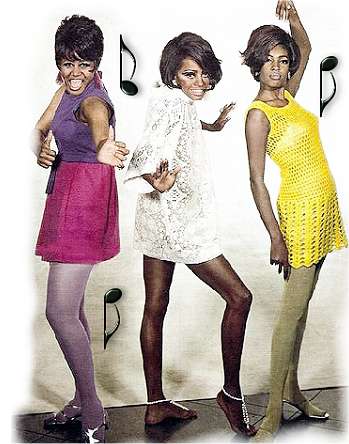
Diana Ross and the Supremes' hits turned out to be both timely and timeless: the rhythm and drama of "You Keep Me Hangin' On" predicted disco's hyperactivity, while "Reflections" and "Love Child" responded to shifting musical and social trends, but maintained the emotional immediacy of the first Supremes hits. They forged a Tin Pan Alley-like fusion in "You Can't Hurry Love," and more pop classicism of the purest sort followed, in "Someday We'll Be Together."
The visuals of Diana Ross and the Supremes were imprinted on America's consciousness at the same time that their run of hits was mounting. The lush sound of "Love is Here and Now You're Gone," which kicked off 1967 at No. 1, was of a piece with the group's runway glamor and uptown chic. The movie theme "The Happening" was another key chart-topper for a group that had led Motown off the Motortown Revue buses and onto the stages of Vegas and the New York supper clubs. Berry Gordy's determination to groom and present Motown acts in every corner of the world, and in every entertainment medium, would lead Diana Ross and the Supremes to co-starring turns with legendary labelmates The Temptations in two top-rated television specials, Takin' Care of Business and Get It Together on Broadway, and in a top 10 single, "I'm Gonna Make You Love Me."
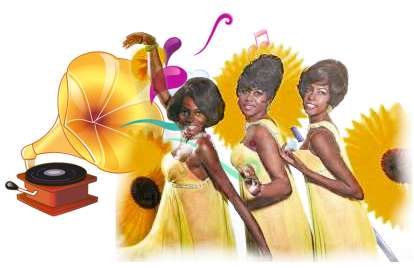
None of the music seemed to date itself, as Supremes songs were remade repeatedly while the originals continued to play on radio, in movies and TV. It proved this: the sound of young America spoke to the dreams of young America. The Supremes phenomenon is often documented with iconic images -- wigs and lashes; homemade teenage dresses that transformed, Cinderella-like, into designer couture; three beautiful faces in repose or in the heat of performance; and that unforgettable Stop!, gesture, to name just a few. But the significance of this success story weren't to be found in the freeze-famed past. The real ripple effects were to be seen in the world itself -- in the cultural significance of putting three beautiful black women on The Ed Sullivan Show.
We've come a long way Baby!

Strolling Down Memory Lane with Candy - Main Page